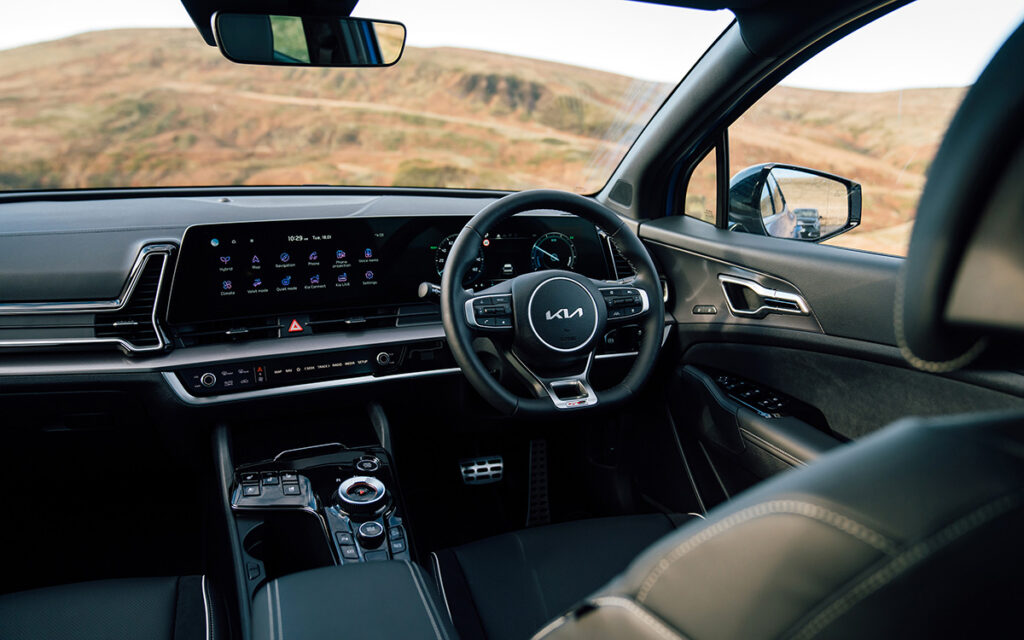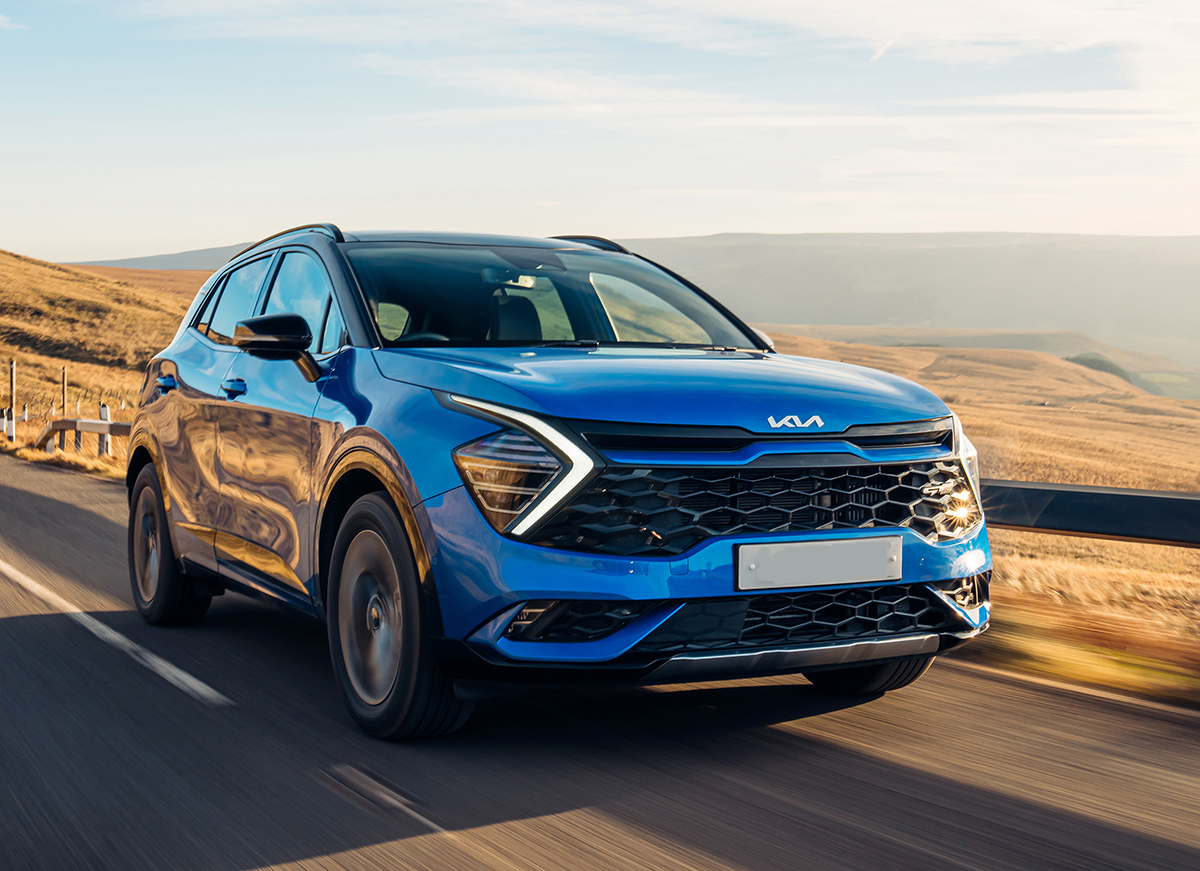I wrote about the Kia Niro PHEV a few weeks ago and here is its bigger brother, the Sportage, also a plugin hybrid variant.
Like the Niro, it’s also available with more conventional petrol and diesel power so there’s a clear choice, depending on your needs and driving habits.
Straight away, there’s a lot more room inside and the cabin is spacious with good all round visibility.
The seats themselves are very comfortable and in my test car were finished in a nice beige/tan leather, which worked surprisingly well with the very attractive metallic green paintwork. If I was buying with my own money, I couldn’t choose a better combination.
My top spec model also came with heated and also cooled seats, together with a heated steering wheel and that give you an indication of the level of equipment fitted – you really want for nothing.
The dashboard is quite similar to the fully electric EV6, so it’s dominated by two big colour screens in the dashboard, one for the driver’s instrumentation, the central one for the infotainment.
Cleverly, there’s a series of touch buttons under the screen which can be switched to control either the entertainment/navigation or the ventilation systems. It’s a really intelligent way to provide physical buttons without cluttering up the dashboard.
Hybrid
So, let’s talk about the hybrid bits. There’s a 1.6 litre petrol, coupled with a 91bhp electric motor and together, the total output is 265bhp. The power is delivered to all four wheels through a six speed automatic and this makes the PHEV the most powerful Sportage in the rane, with a 0-100km/h time of 7.9 seconds, which is quick enough for a mid sized SUV.
Fuel consumption is a claimed 1.1 l/100km, which of course won’t be achieved in real life, unless you can run almost exclusively on battery power.
There’s a 13.4kWh battery fitted and Kia claim a 70km EV range, which I didn’t come close to. At main road speeds, I found the petrol engine kicking in at around the 35km mark although if you stuck around town, I’d say it would make 50km or so.
PHEVs generally don’t support fast DC charging but at least there’s support for 7kW AC chargers so you get the full beans from a domestic wall charger, giving you a full charge from empty in around two hours. That gives reasonable scope to top the car up between shorter journeys throughout the day. Ideal for school runs or short commutes.
The charging port is ideally sited on the rear three quarter panel so you can reverse into the charging bay.

The suspension gives a solid drive with a comfortable ride, although in truth the Sportage isn’t the most fun car to drive. It’s dependable though in all conditions and there’s very little road noise.
Dotted around the cabin there are plenty of storage areas and USB power sockets, even mounted on the back of the front seats so there’s power for everyone.
As a family car, the Sportage makes sense with a big 540 litre boot. About 50 litres are lost to the batteries, which are mounted under the boot floor, but in truth, there’s plenty of space available.
The Range
The Sportage range starts from €37,500 for the 1.6 litre mild hybrid diesel in K2 trim.
PHEV models come with a choice of K3 and K4 trims, so pricing starts from €47,000 for the K3 and the K4 top spec comes in at €49,500.
K3 comes with 19” alloys, heated front and rear seats, active cruise with stop and start facility and privacy glass for the rear windows and tailgate.
Moving up to K4 adds niceties including leather seats, adaptive LED headlights and wireless phone charging.
Which Sportage model suits depends entirely on your driving habits. If you regularly do long journeys, then diesel is still the way to go but if most of your trips are short, urban jaunts, the PHEV might be just what the doctor ordered.










